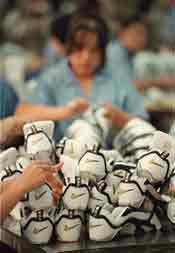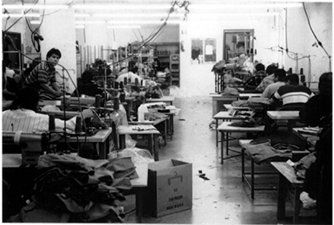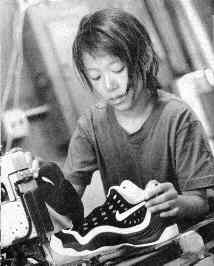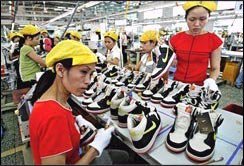 |
||||
|
Women in Slavery:
|
|
|||
|
|
||||
|
The national discussion about codes and monitoring in the United States has been a long process of dispute and compromise. Why should it be any different in the nations at the center of these debates? Part of the reason workers have been excluded from these discussions in the United States may have to do with how the anti-sweatshop movement sought to raise public consciousness in the first place. The most successful campaigns highlighted the most brutal conditions. Consumers and students were motivated by images of girls behind barbed-wire fences and testimonies of physical and sexual abuse. Concerned consumers and students see themselves as voices for the voiceless, for impoverished women and girls who slave away their youth sewing our clothes. When I lived in Guatemala last year, I saw a more complete reality. A quick example: I asked a cleaning woman I knew if she had ever worked in a maquila "I tried it once," she replied. "But I was too much of a cry-baby. You have to be really tough to work there and I just couldn't take it." After doing lengthy interviews with women trying to organize in the maquilas in Honduras and Guatemala, I understood what she meant. Some women and girls may indeed see themselves as victims with no options. But there are also many who see themselves as breadwinners and agents of their own destiny. They chose to work in the maquila and they hope to improve their conditions through organizing. These workers need to be at the table with us as we discuss the conditions under which they work and live and what we can do about them. As our grassroots campaigns continue, we need to focus on the diversity of maquila women's and girls' experiences and exchange images of helpless victims with images of solidarity partners.
Where Does the Movement Go?As you may imagine, the sweatshop debate quickly becomes technical and complicated. Student activists at universities that have passed codes of conduct are wondering: What next? There are a few students on each campus involved in the policy debates, but that does not lend itself to mass mobilization. Yet at critical times, for example when we may want to push universities to leave the FLA, we will need to be able to mobilize a lot of support. At UNC, after a year of the Nike campaign, we formed a group called Students for Economic Justice, with the idea that we wanted to connect with local labor struggles and broaden our base. Across the country, student-labor groups are growing and expanding. Linking the sweatshop struggle to local struggles is a crucial part of sustaining our movement. One of the major demands of the anti-sweatshop movement is a living wage, a perfect link to local struggles. While a few students continue to advocate for policy changes in licensing at the university, the student-labor movement must remain strong by connecting the international and the local issues. Universities cannot ignore the problem of sweatshops. There remains a strong democratic movement within universities that seeks accountability for the moral ideals of the institution. Universities are an easy target compared to corporations, who continue to function in a moral vacuum. Perhaps universities can be transformed into the whistleblowers of a society that values profit over people. In order to affect universities and their influence on society, however, the student anti-sweatshop movement must demonstrate that it has staying power. I agree with the analysis of many student leaders in the movement: our power is in grassroots organizing on university campuses. We will be able to sustain ourselves if we focus on educating students and not becoming too engrossed in the legalistic debates; if we encourage our peers to think beyond the image of helpless third-world women (promoted as much in academia as in activism) and rather, to think about how we can work in solidarity with them as our partners; if we build and diversify our coalitions; and if we connect to the local labor struggles in our communities. It is a tall order but we have the energy, the passion, and the analysis to spark change.
|
||||
 |
|
 |
||




